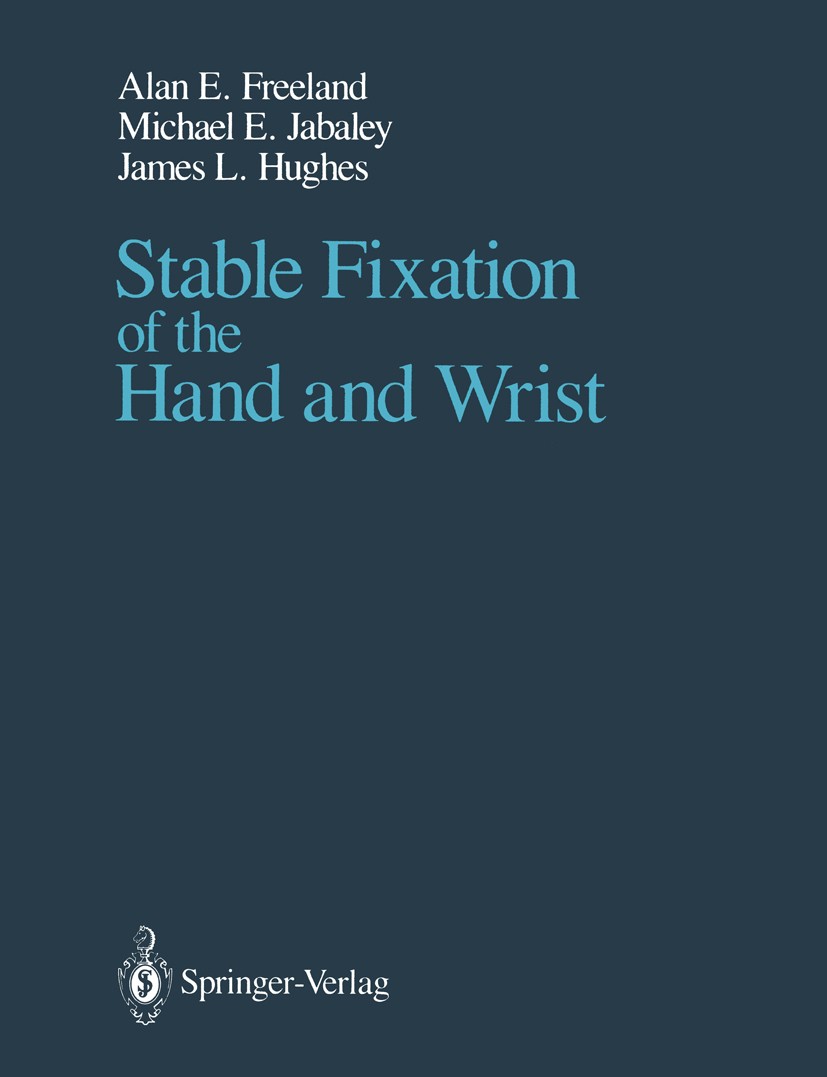| 书目名称 | Stable Fixation of the Hand and Wrist | | 编辑 | Alan E. Freeland,Michael E. Jabaley,James L. Hughe | | 视频video | http://file.papertrans.cn/876/875438/875438.mp4 | | 图书封面 |  | | 描述 | In the past, conservative (or nonoperative) treatment of fractures of the hand has been the rule and severe and multiple fractures usually did not receive surgical atten tion. There are probably several reasons why this is so. Rarely did these fractures threaten life; they usually healed rapidly; and after immobilization, hand pain usually subsided. At the same time, intraarticular fractures frequently were unstable and often displaced and attempts to correct deformity were considered difficult to achieve. As a result, the ultimate joint motion in many cases was limited. It can fairly be said that decisions and techniques regarding internal fixation of small joints and bones were not known to most surgeons. Although the history of internal fixation is not extensive, there have been some exciting events. In the 16th century gold plates were used to repair cleft palates. Later, the Chinese employed wire loop sutures to correct difficult fractures. In the 18th century silver cerclage wires were used to achieve fixation and promote early bone healing. Although these fracture treatments occasionally proved successful, more frequently they did not and they never enjoyed wide acceptance. | | 出版日期 | Book 1986 | | 关键词 | Instrument; bone; fixation; fracture; hand; implant; osteotomy; Trauma Surgery | | 版次 | 1 | | doi | https://doi.org/10.1007/978-1-4613-8640-7 | | isbn_ebook | 978-1-4613-8640-7 | | copyright | Springer-Verlag New York Inc. 1986 |
The information of publication is updating

|
|
 |Archiver|手机版|小黑屋|
派博传思国际
( 京公网安备110108008328)
GMT+8, 2025-12-16 01:31
|Archiver|手机版|小黑屋|
派博传思国际
( 京公网安备110108008328)
GMT+8, 2025-12-16 01:31


